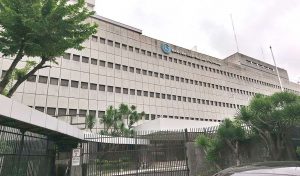




Monthly Economic Update: One for the road
 DOWNLOAD
DOWNLOAD

Inflation Update: Still low, still slow
 DOWNLOAD
DOWNLOAD

Philippines Trade Update: Exports momentum continues
 DOWNLOAD
DOWNLOAD


Central bank seen to raise rates by 25 bps in May

THE PHILIPPINE central bank is expected to raise benchmark rates by 25 basis points (bps) in May, which could mark the end of its monetary tightening cycle, Fitch Solutions Country Risk & Industry Research said.
“We anticipate that the Bangko Sentral ng Pilipinas (BSP) will deliver one final 25-bp hike at the next meeting in May, before keeping the policy rate on hold at 6.5% thereafter,” it said in a note on Monday.
The Monetary Board last week raised its benchmark rate by 25 bps to 6.25%, the highest key rate in nearly 16 years or since 7.5% in May 2007.
Since May 2022, the BSP has increased rates by 425 bps, making it one of the most aggressive in Asia.
The Monetary Board’s next policy meeting is on May 18.
“Beyond the next meeting in May, signs of economic weakness will become increasingly evident in the data, which will then set the stage for the policy rate to be kept on hold,” Fitch Solutions said.
Fitch Solutions said the Philippine economy will grow by 5.9% this year, slowing from 7.6% in 2022 due to lackluster global demand and the lagged impact of monetary tightening.
The gross domestic product (GDP) growth forecast is also a tad lower than the government’s 6-7% target for the year.
Fitch Solutions said the 5.9% growth projection will still be below the economy’s potential before the pandemic, when it was growing by an average rate of 6.6% annually from 2015-2019.
Currency weakness driven by the US Federal Reserve’s aggressive tightening will also fade, allowing more room for the BSP to pause tightening within the first half of the year, Fitch Solutions said.
The peso closed at PHP 54.29 versus the US dollar on Monday, up by six centavos from its PHP 54.35 finish on Friday. Since its record low close of PHP 59 against the greenback in October last year, the peso has appreciated by PHP 4.71 or 8.7%.
“Our baseline forecast is for the US policy rate to peak at 5.5% by the first half of 2023, before being left on hold through yearend,” Fitch Solutions said, adding that the risks are now on the downside due to the collapse of Silicon Valley Bank.
The US Federal Reserve hiked the fed funds rate by 25 bps to 4.75-5% last week. The Fed has now raised 475 bps since March 2022. Most Fed officials also said the terminal rate may only hit 5.25% this year.
However, risks to the Philippine policy rate forecast are tilted to the upside, Fitch Solutions said.
“Firstly, the peso remains susceptible to sell-offs in the near term due to a sustained wide current account deficit. In a risk-off event, the BSP may be forced to hike more aggressively than we expect to defend the currency,” Fitch said.
“Second, if price pressures surprise to the upside, possibly due to further supply disruptions, the central bank would likely have to hike its policy rate even further to anchor inflation expectations,” it said.
Fitch Solutions said headline inflation will likely fall within the BSP’s 2-4% target by the second half this year, but full-year average is expected to hit 6.5%, higher than 5.8% in 2022.
This is as supply conditions have yet to improve and the next major harvest is likely to finish by only around April or May, it added.
The BSP last week lowered its inflation forecasts to 6% for 2023 from 6.1% previously, and to 2.9% for 2024 from 3.1%.
In a separate note, Moody’s Analytics said the Monetary Board had little choice but to tighten last week, given robust demand and persistent inflation pressures.
“March’s smaller hike reflects a balancing act; the central bank wants to get inflation back in the bottle while taking a step back to assess the impact of past rate hikes. Monetary policy changes work with a lag, so it takes time to see their full impact on an economy,” it said. — Keisha B. Ta-asan
This article originally appeared on bworldonline.com





 By BusinessWorld
By BusinessWorld